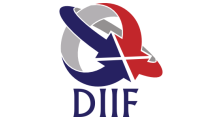In-silico investigation of curcumin drug-likeness, gene-targets and prognostic relevance of the targets in panels of human cancer cohorts
DOI:
https://doi.org/10.30574/gscbps.2021.14.1.0002Keywords:
Curcumin, Cancer, In silico studies, Drug-likeness, Drug target, Protein-protein interactionsAbstract
Despite advancements in diagnostic and standard treatment modalities, cancer survival rate remains disappointing globally. It has however, been recognized that exploring the therapeutic properties of secondary metabolite from natural products may alleviate the problems of drug resistance and toxicity that besiege the conventional therapies, and hence improve the overall prognosis of cancer patient. To this end curcumin, a polyphenolic natural compound has been widely studied for it anticancer activities in in vitro and in vivo models. Computational technology has significantly improved the success rate of drug discovery and development, hence, it has become a widely explore tool in drug candidate identification. In this study we used computational approached to identify 12 genes that are potential druggable candidate for curcumin. The genes identified were found to be enriched in cancer and drug resistance associated signaling pathways. Interestingly, the top 3 identified genes; Microtubule-associated protein tau (MAPT), Toll-like receptor 9 (TLR9) and Tyrosyl-DNA phosphodiesterase 1 (TDP1) were observed to be over expressed in multiple cancer cohorts and were associated with poor prognoses of the patients. Curcumin has good physicochemical, bioavailability and ADMET properties. Importantly, it met the Lipinski's Rule of 5 for drug likeness and thus worthy of further in vitro and in vivo confirmation studies.
Metrics
References
Lee J-C, Wu ATH, Chen J-H, Huang W-Y, Lawal B, Mokgautsi N, Huang H-S, Ho C-L. HNC0014, a Multi-Targeted Small-Molecule, Inhibits Head and Neck Squamous Cell Carcinoma by Suppressing c-Met/STAT3/CD44/PD-L1 Oncoimmune Signature and Eliciting Antitumor Immune Responses. Cancers. 2020; 12(12):3759
Organization, W.H. WHO report on cancer: setting priorities, investing wisely and providing care for all. 2020.
Wellington KW. Understanding cancer and the anticancer activities of naphthoquinones–a review. RSC advances. 2015; 5: 20309-20338.
Alam MS, Lee DU. Synthesis, biological evaluation, drug-likeness, and in silico screening of novel benzylidene-hydrazone analogues as small molecule anticancer agents. Archives of pharmacal research. 2016; 39: 191-201.
Lawal B, Shittu OK, Kabiru AY, Jigam AA, Umar MB, Berinyuy EB, Alozieuwa BU. Potential antimalarials from African natural products: A reviw. J Intercult Ethnopharmacol. 2015; 4: 318-343.
Bashir L, Shittu O, Sani S, Busari M, Adeniyi K. African natural products with potential antitrypanosoma properties: A review. Int J Biochem Res Rev. 2015; 7: 45-79.
Lawal B, Shittu OK, Oibiokpa FI, Mohammed H, Umar SI, Haruna GM. Antimicrobial evaluation, acute and sub-acute toxicity studies of Allium sativum. Journal of Acute Disease. 2016; 5: 296-301.
Lawal B, Shittu OK, Oibiokpa FI, Berinyuy EB, Mohammed H. African natural products with potential antioxidants and hepatoprotectives properties: a review. Clinical Phytoscience. 2016; 2: 23.
Deshapriya US, Dinuka DLS, Ratnaweera PB, Ratnaweera CN. In silico study for prediction of novel bioactivities of the endophytic fungal alkaloid, mycoleptodiscin B for human targets. Journal of Molecular Graphics and Modelling. 2021; 102: 107767.
Davison EK, Brimble MA. Natural product derived privileged scaffolds in drug discovery. Current opinion in chemical biology. 2019; 52: 1-8.
Lawal B, Shittu OK, Abubakar AN, Olalekan IA, Jimoh AM, Abdulazeez AK. Drug leads agents from methanol extract of Nigerian bee (Apis mellifera) propolis. J Intercult Ethnopharmacol. 2016; 5: 43-48.
Kyungseop A. The worldwide trend of using botanical drugs and strategies for developing global drugs. BMB Rep. 2017; 50: 111-116.
Priyadarsini KI. Chemical and structural features influencing the biological activity of curcumin. Current pharmaceutical design. 2013; 19: 2093-2100.
Ibrahim J, Kabiru AY, Abdulrasheed-Adeleke T, Lawal B, Adewuyi AH. Antioxidant and hepatoprotective potentials of curcuminoid isolates from turmeric (Curcuma longa) rhizome on CCl4-induced hepatic damage in Wistar rats. Journal of Taibah University for Science. 2020; 14: 908-915.
Allegra A, Innao V, Russo S, Gerace D, Alonci A, Musolino C. Anticancer Activity of Curcumin and Its Analogues: Preclinical and Clinical Studies. Cancer Invest. 2017; 35: 1-22.
Hewlings SJ, Kalman DS. Curcumin: A Review of Its Effects on Human Health. Foods (Basel, Switzerland). 2017; 6.
Dimas K, Tsimplouli C, Houchen C, Pantazis P, Sakellaridis N, Tsangaris GT, Anastasiadou E, Ramanujam RP. An Ethanol Extract of Hawaiian Turmeric: Extensive in Vitro Anticancer Activity Against Human Colon Cancer Cells. Alternative therapies in health and medicine. 2015; 21 Suppl 2: 46-54.
Yue GGL, Chan BCL, Hon PM, Lee MYH, Fung KP, Leung PC, Lau CBS. Evaluation of in vitro anti-proliferative and immunomodulatory activities of compounds isolated from Curcuma longa. Food Chem Toxicol. 2010; 48: 2011-2020.
Goel A, Aggarwal BB. Curcumin, the golden spice from Indian saffron, is a chemosensitizer and radiosensitizer for tumors and chemoprotector and radioprotector for normal organs. Nutrition and cancer. 2010; 62: 919-930.
Zholobak NM, Shcherbakov AB, Ivanova OS, Reukov V, Baranchikov AE, Ivanov VK. Nanoceria-curcumin conjugate: Synthesis and selective cytotoxicity against cancer cells under oxidative stress conditions. Journal of Photochemistry and Photobiology B: Biology. 2020; 209: 111921.
Ya'u Ibrahim Z, Uzairu A, Shallangwa G, Abechi S. Molecular docking studies, drug-likeness and in-silico ADMET prediction of some novel β-Amino alcohol grafted 1,4,5-trisubstituted 1,2,3-triazoles derivatives as elevators of p53 protein levels. Scientific African. 2020; 10: e00570.
Lipinski CA. Drug-like properties and the causes of poor solubility and poor permeability. Journal of pharmacological and toxicological methods. 2000; 44: 235-249.
Li T, Fu J, Zeng Z, Cohen D, Li J, Chen Q, Li B, Liu XS. TIMER2.0 for analysis of tumor-infiltrating immune cells. Nucleic Acids Res. 2020; 48: W509-w514.
Tang Z, Li C, Kang B, Gao G, Li C, Zhang Z. GEPIA: a web server for cancer and normal gene expression profiling and interactive analyses. Nucleic Acids Research. 2017; 45: W98-W102.
Alam MS, Lee DU. Synthesis, biological evaluation, drug-likeness, and in silico screening of novel benzylidene-hydrazone analogues as small molecule anticancer agents. Archives of pharmacal research. 2016; 39: 191-201.
Rao MS, Gupta R, Liguori MJ, Hu M, Huang X, Mantena SR, Mittelstadt SW, Blomme EAG, Van Vleet TR. Novel Computational Approach to Predict Off-Target Interactions for Small Molecules. Frontiers in Big Data. 2019; 2.
Downloads
Published
How to Cite
Issue
Section
License

This work is licensed under a Creative Commons Attribution-NonCommercial-ShareAlike 4.0 International License.
















